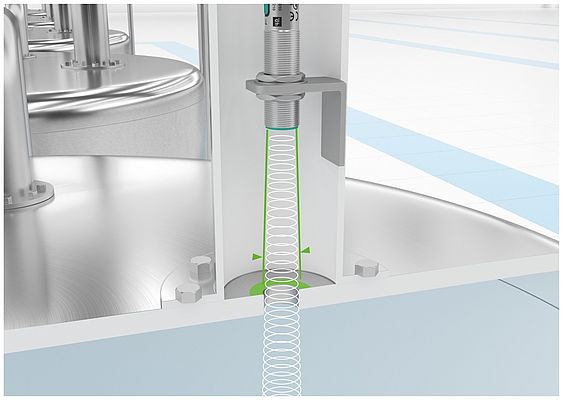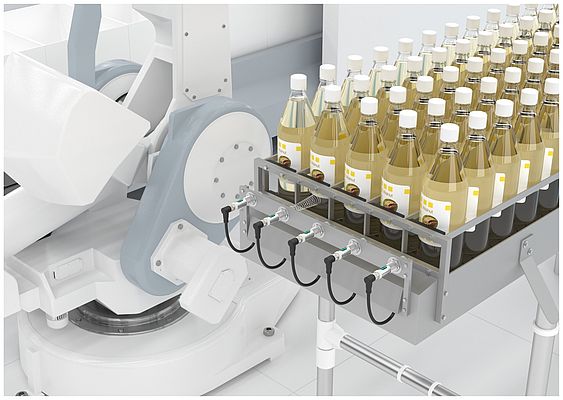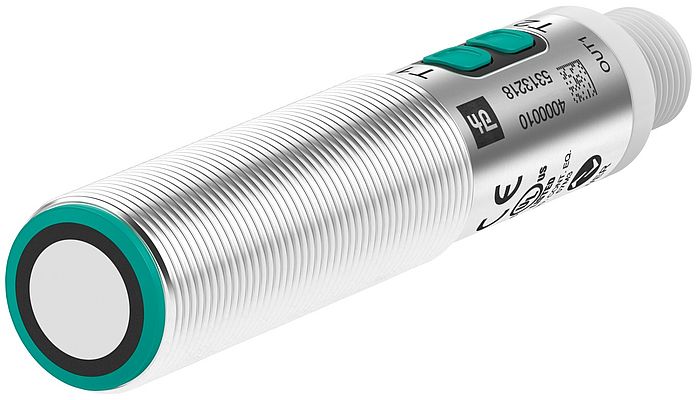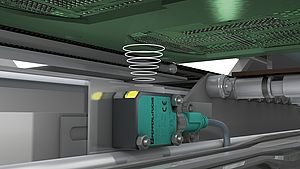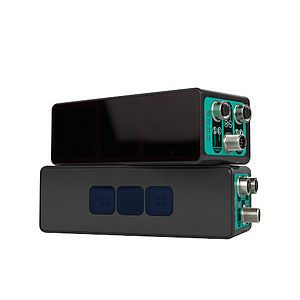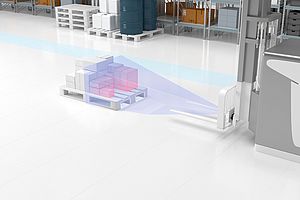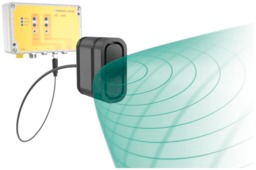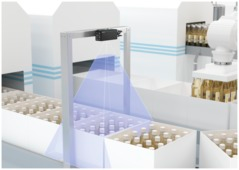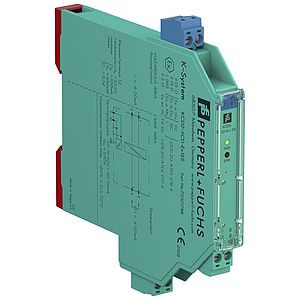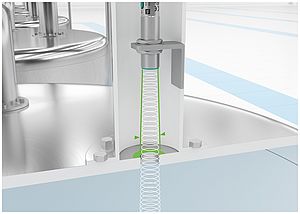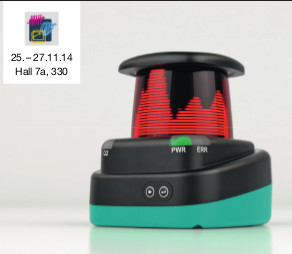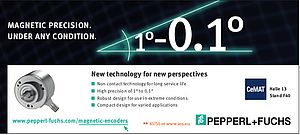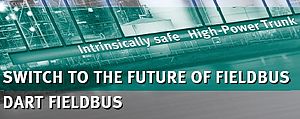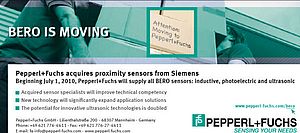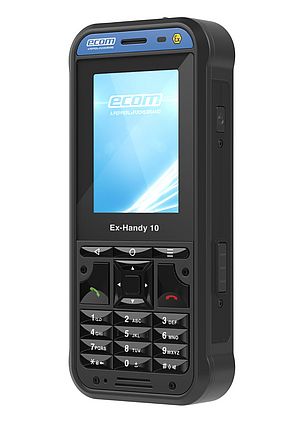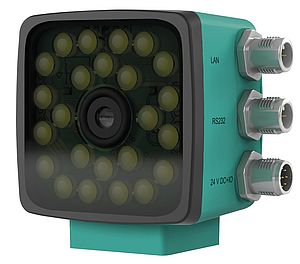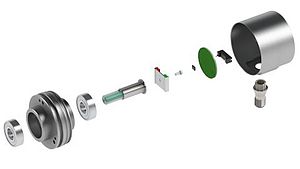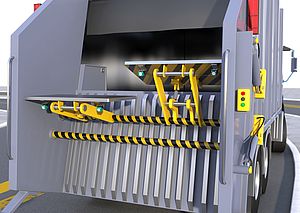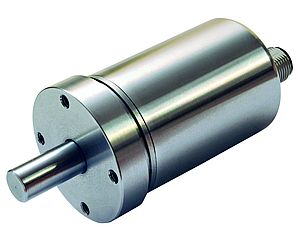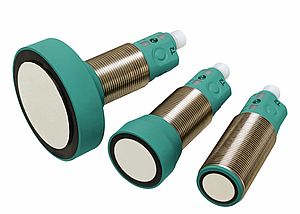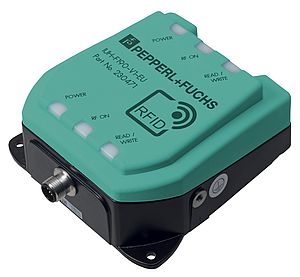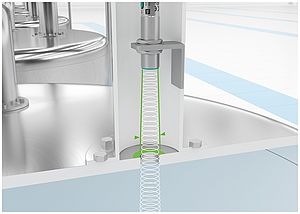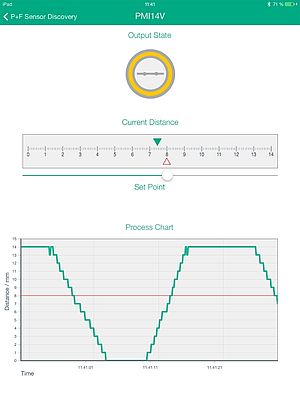Flexibility, comprehensive functionality and futureproof data transfer options are among the top requirements for sensors in IIoT and Industry 4.0 environments. Pepperl+Fuchs’ new UC18GS series of ultrasonic sensors with an IO-Link interface meets them by relying on proven and robust technology combined with up-to-date features. The devices can be used in process automation as well as in manufacturing applications. The same sensor can be comfortably configured to perform highly diverse tasks by using push buttons, an IrDA interface or IO-Link (DTM/Pactware).
Ultrasonic sensors are extremely robust by default. They reliably detect all kinds of materials without being irritated by the optical properties of their surfaces. Dust, fog and pollution don’t compromise the measurement, the sensor cleans itself through vibration. Its physical principle—the propagation of sound—works, with very few exceptions, in practically any environment and even under toughest conditions. This enables ultrasonic sensors to solve complex tasks involving object detection or level measurement with millimetre precision.
Ultrasound with options
In the new UC18GS series the underlying features of ultrasonic measurement are combined with a broad range of options for configuration and data transfer. For example, the beam width on an UC18GS ultrasonic sensor can be easily adjusted to accommodate different container shapes in a level measurement application or varying targets in object detection. The sound beam of the sensor can be adjusted without loss of range. The dead band is small, at 30mm for the 500mm-range sensor and 70mm for the 1000mm range.
Convenient programming and parameterization of the device can be performed with the traditional on-board pushbuttons but it can also be done without physical access to the sensor via IO-Link or infrared IrDA interfaces. The IrDA interface allows live data access in running applications for maintenance or analysis purposes. Using the IO-Link or the IrDA interface, the sensor can be comprehensively configured via DTM/PACTware.
The IO-Link interface also opens the way for bidirectional intelligent communication with the device and a seamless integration into Industry 4.0 applications. An internationally standardised, cross-vendor open interface, IO-Link is standardized according to IEC 61131-9 and is compatible with any fieldbus on the market. IO-Link sensors can be configured via the control system, making commissioning simple and allowing for quick recipe changes without extended downtime. Even complete individualization—batch size 1 production—becomes possible.
Level measurement with disturbance suppression
The device’s configuration options offer, among others, one major advantage for the level measurement of liquids and free-flowing solids in containers and tanks: disturbance variables such as support struts, ladders or other objects reaching into the measuring field can be suppressed by software (PACTware). At the same time, the ultrasonic sensor reliably detects solid and liquid media, regardless of their physical properties or irregular surfaces. The device features a protection degree of IP67, ensuring that the measurement is not disturbed by harsh conditions in an industrial environment or in the interior of a tank.
Thanks to the space-saving design of the UC18GS devices, a small opening in the tank cap is sufficient for installation. The diameter of the cone-shaped sound beam can be adjusted for the target surfaces which it strikes over a wide area. In the case of irregular or moving surfaces, the sensor determines an average value and thus indicates the actual level instead of a potentially distorted punctual value. The level is precisely detected even in the suppressed area.
Synchronized object detection
Filling lines in the beverage industry give a good example for the challenges of object detection. Typically, they operate at high throughput rates and a high level of automation. On their way to the packaging station, the filled containers (bottles, cans etc.) pass through bottle aisles. At the final position, their presence in each aisle is monitored separately. Only when each bottle has reached in the correct position will the infeed be activated via a robot arm. In the machines, several aisles are usually arranged next to each other, so a correspondingly large number of sensors work in parallel in a confined space.
The sensors must reliably and accurately detect the presence of the containers at the end positions, at high machine speeds and with constant vibration. The containers can be made of different materials (glass, plastic, ceramic); their colours vary; they can be transparent or have reflective surfaces. In this application too, there is only little space for the sensors, and they must not interfere with each other’s detection.
The UC18GS series ultrasonic sensors reliably detect the presence of the targets in the end positions. As their sound beam hits the surface of the container over a relatively wide area, reliable detection is ensured even with varying contours and position deviations. When several devices are mounted close to each other, they will automatically synchronize their sound signals and avoid interfering. Up to ten sensors can be connected via their synchronization input. Sensor synchronization takes place automatically and without parameterization.
The device’s qualities are backed up by Pepperl+Fuchs’ extensive competence in ultrasound technology. The sensors are developed and manufactured in a specialised technology centre in Germany. Over more than 30 years, this unit has built the broadest ultrasound sensor portfolio in the industry, supported by numerous patents and innovations as well as application know-how in practically all industries. The centre’s infrastructure allows to offer customised products with great flexibility and speed. A broad range of accessories provides the modules for customized integration in tough installation conditions, for special applications, custom programming and coordinated connection technology.
Till Hoffmeyer-Zlotnik, Pepperl+Fuchs


